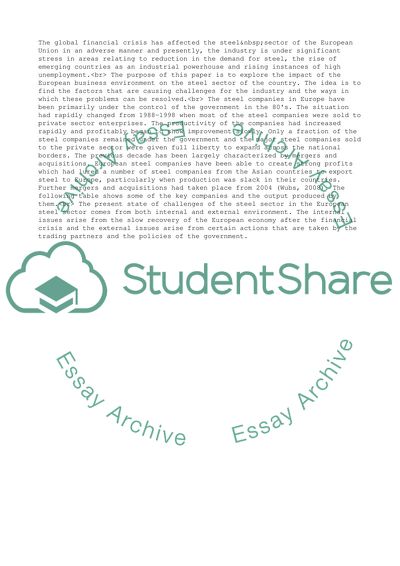Cite this document
(“Steel sector analysis within the EU Essay Example | Topics and Well Written Essays - 2000 words”, n.d.)
Steel sector analysis within the EU Essay Example | Topics and Well Written Essays - 2000 words. Retrieved from https://studentshare.org/business/1663172-steel-sector-analysis-within-the-eu
Steel sector analysis within the EU Essay Example | Topics and Well Written Essays - 2000 words. Retrieved from https://studentshare.org/business/1663172-steel-sector-analysis-within-the-eu
(Steel Sector Analysis Within the EU Essay Example | Topics and Well Written Essays - 2000 Words)
Steel Sector Analysis Within the EU Essay Example | Topics and Well Written Essays - 2000 Words. https://studentshare.org/business/1663172-steel-sector-analysis-within-the-eu.
Steel Sector Analysis Within the EU Essay Example | Topics and Well Written Essays - 2000 Words. https://studentshare.org/business/1663172-steel-sector-analysis-within-the-eu.
“Steel Sector Analysis Within the EU Essay Example | Topics and Well Written Essays - 2000 Words”, n.d. https://studentshare.org/business/1663172-steel-sector-analysis-within-the-eu.


